

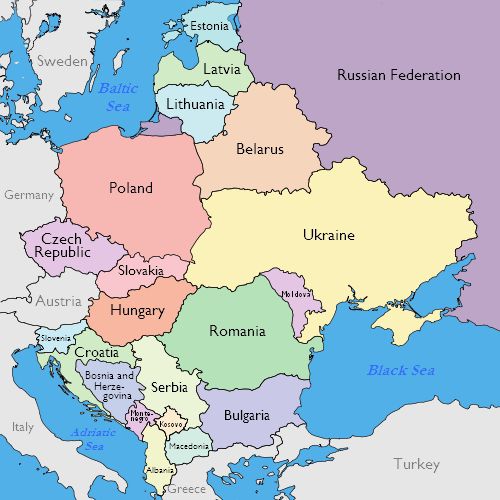
This presentation looks back at 30 years of development in Central and Eastern Europe (CEE) since the fall of the Berlin Wall in 1989. It traces how the countries from the former communist bloc developed on a variety of economic and social indicators, including wealth, unemployment, inequality, productivity, child mortality, life expectancy, and more. Looking back over a period of 30 years gives us a chance to appreciate the enormous achievements that these countries have accomplished, despite the many political and other challenges they faced. Many of these countries still suffer from endemic problems with corruption, weak rule of law, and state capture. But they have also gone through enormous social and economic transformations that brought their economies and societies much closer to the standards in Southern, Western, and Northern Europe than anyone dared to hope back in 1989. The reforms behind the social and economic convergence of the CEE region to the rest of the European Union (EU) came at a huge social costs: mass emigration from the region, inadequate social safety nets, minimal care for the old and disadvantaged. There are real problems that cannot and should not be ignored. But the overall message that appears from the data presented in the graphs below is one of success and optimism about the power of the people to build modern economies and relatively wealthy societies over a period of 30 years.
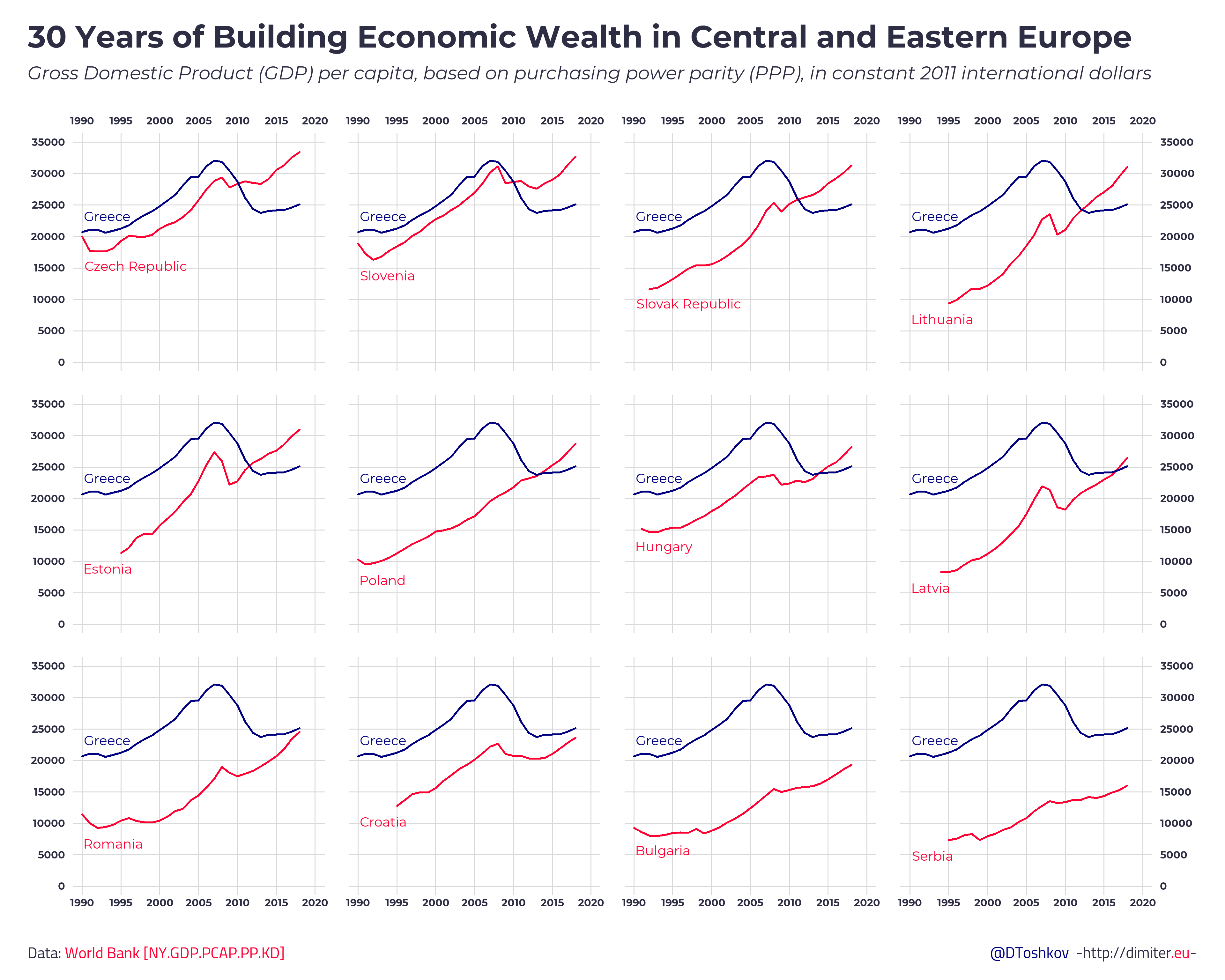

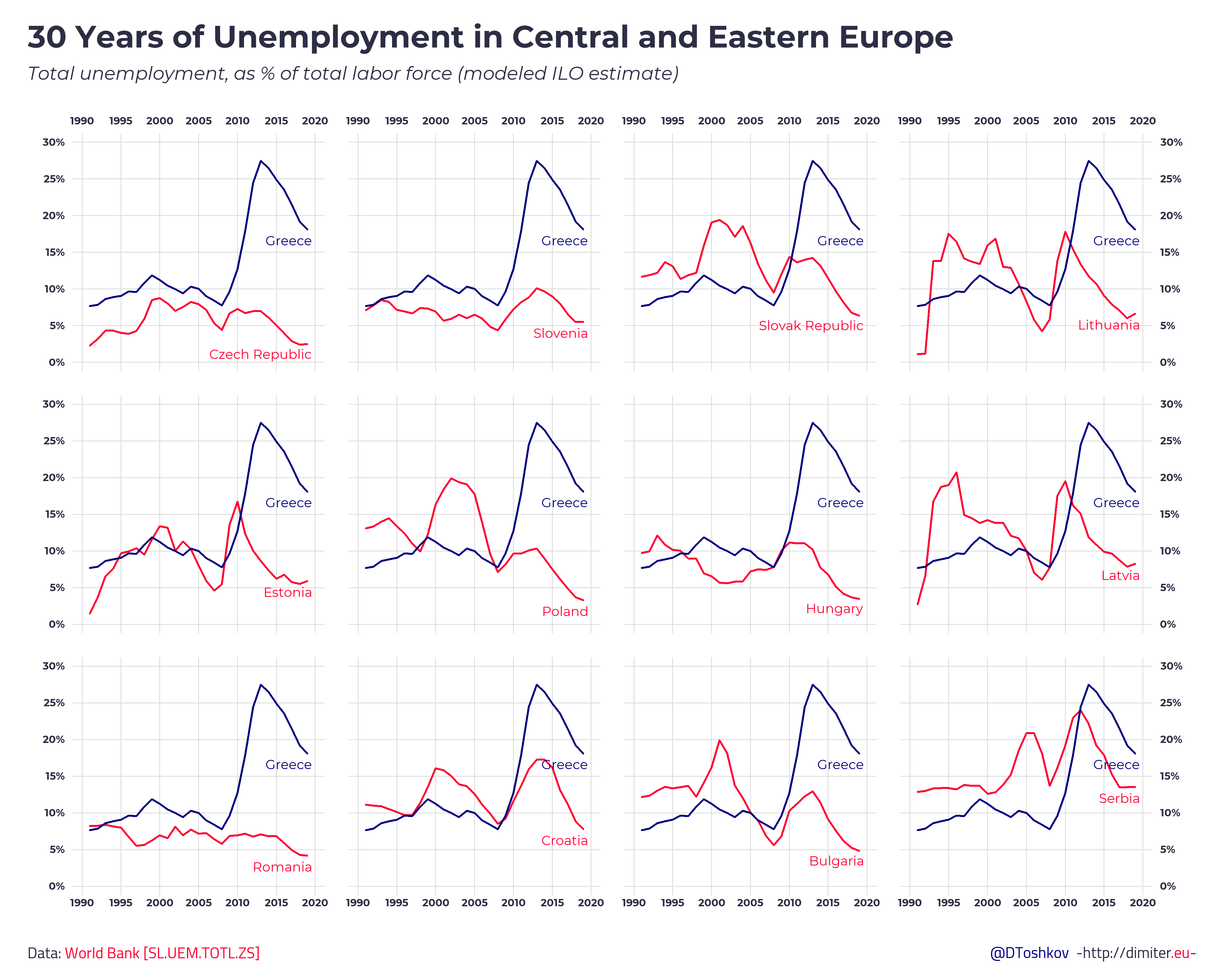
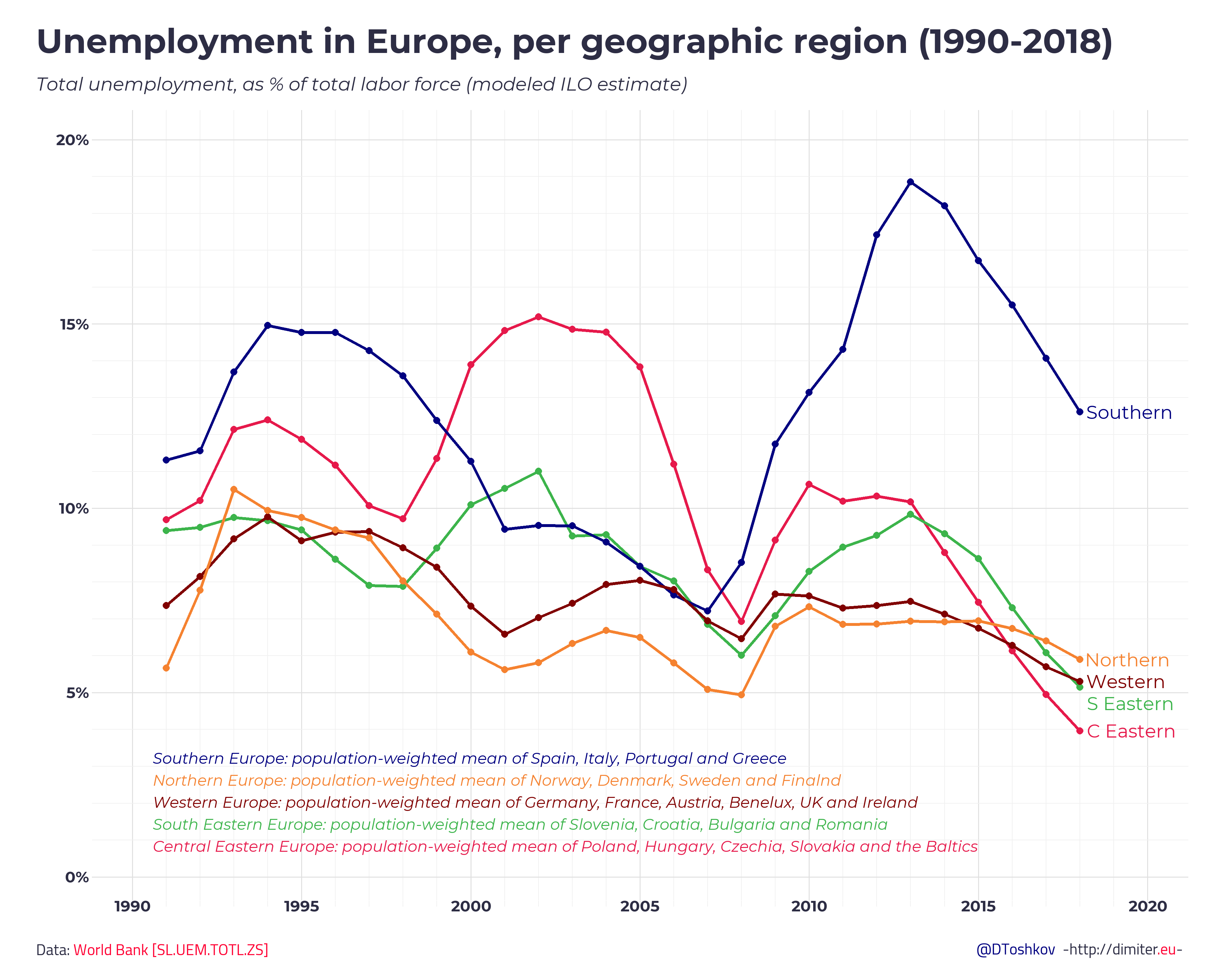
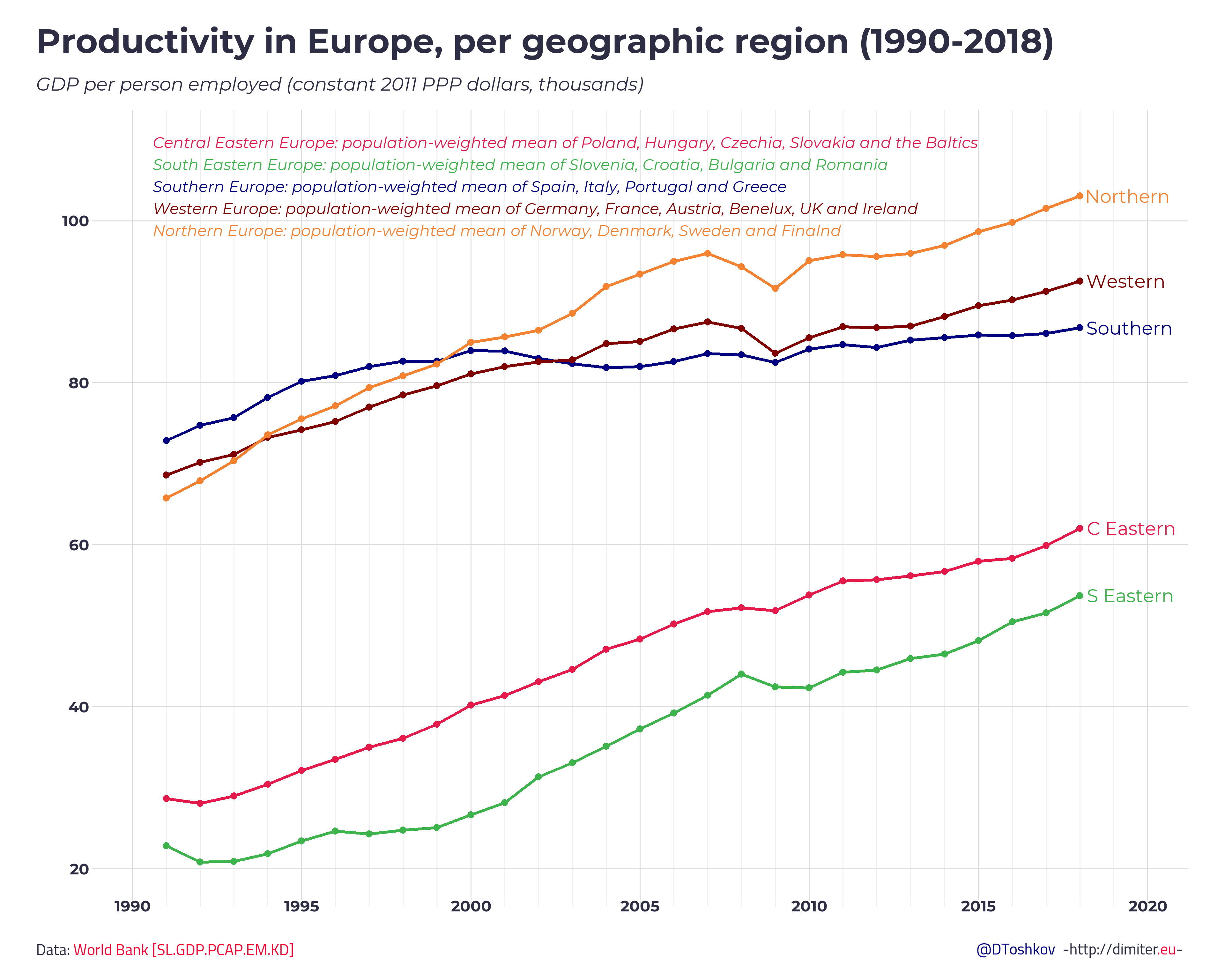
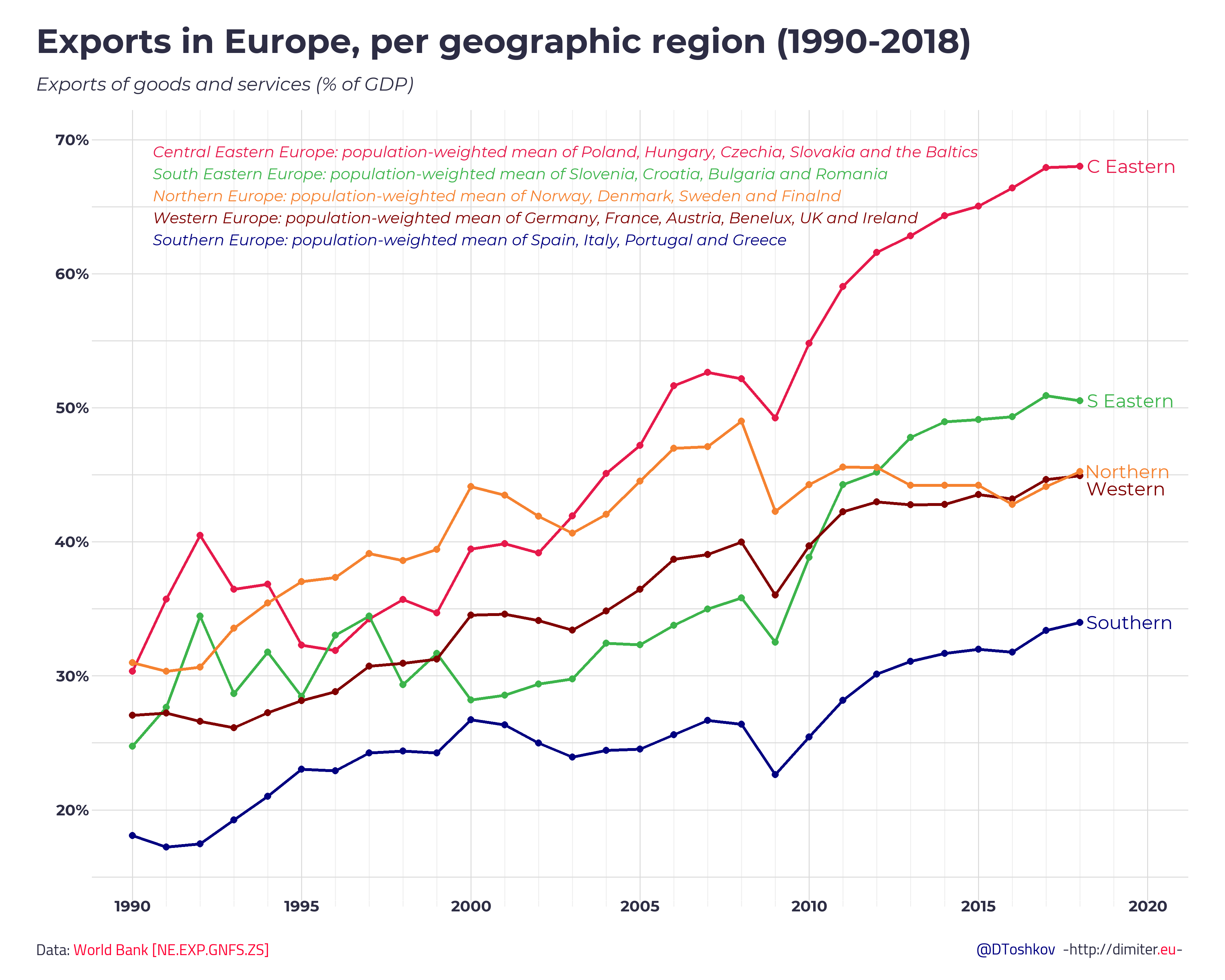
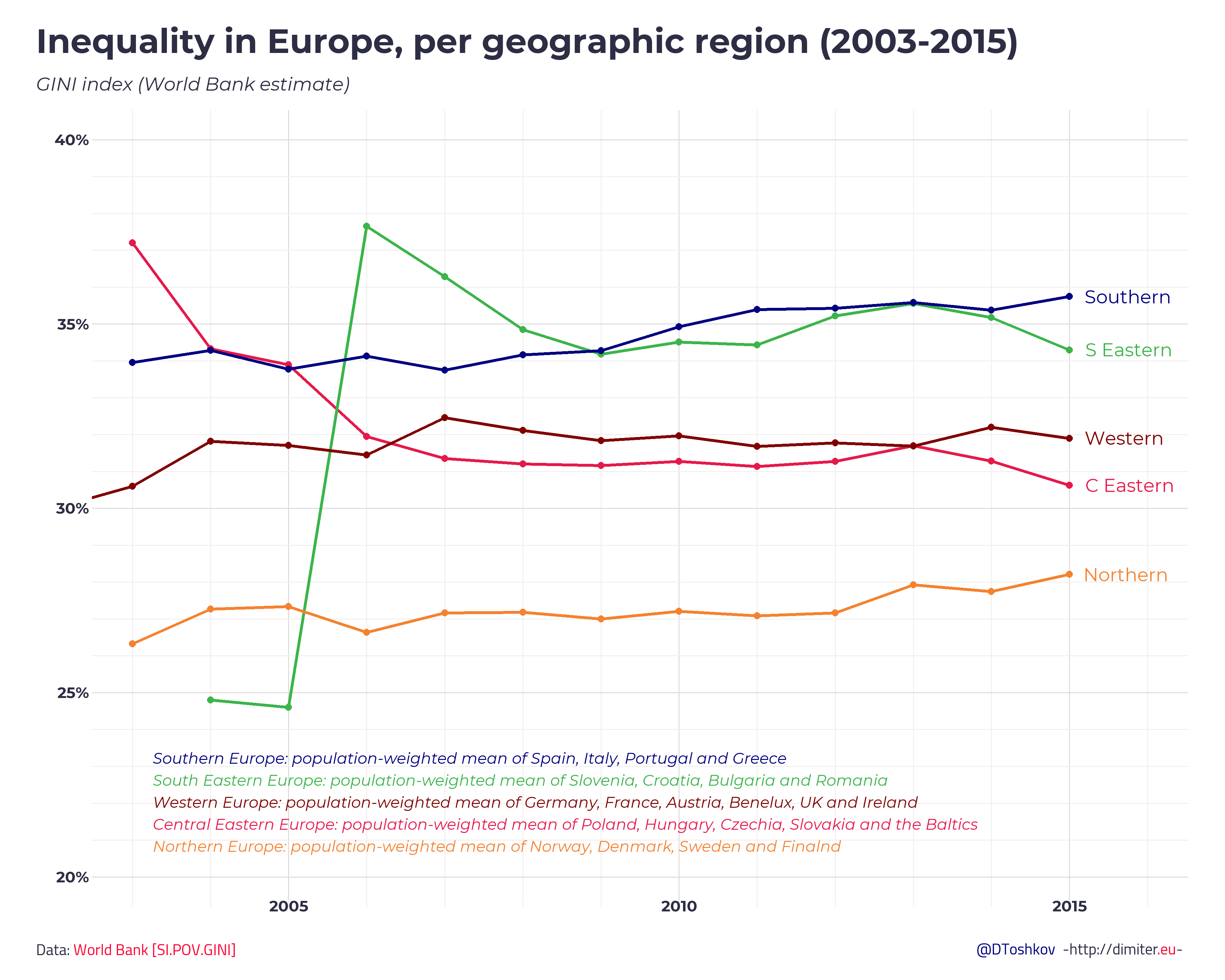
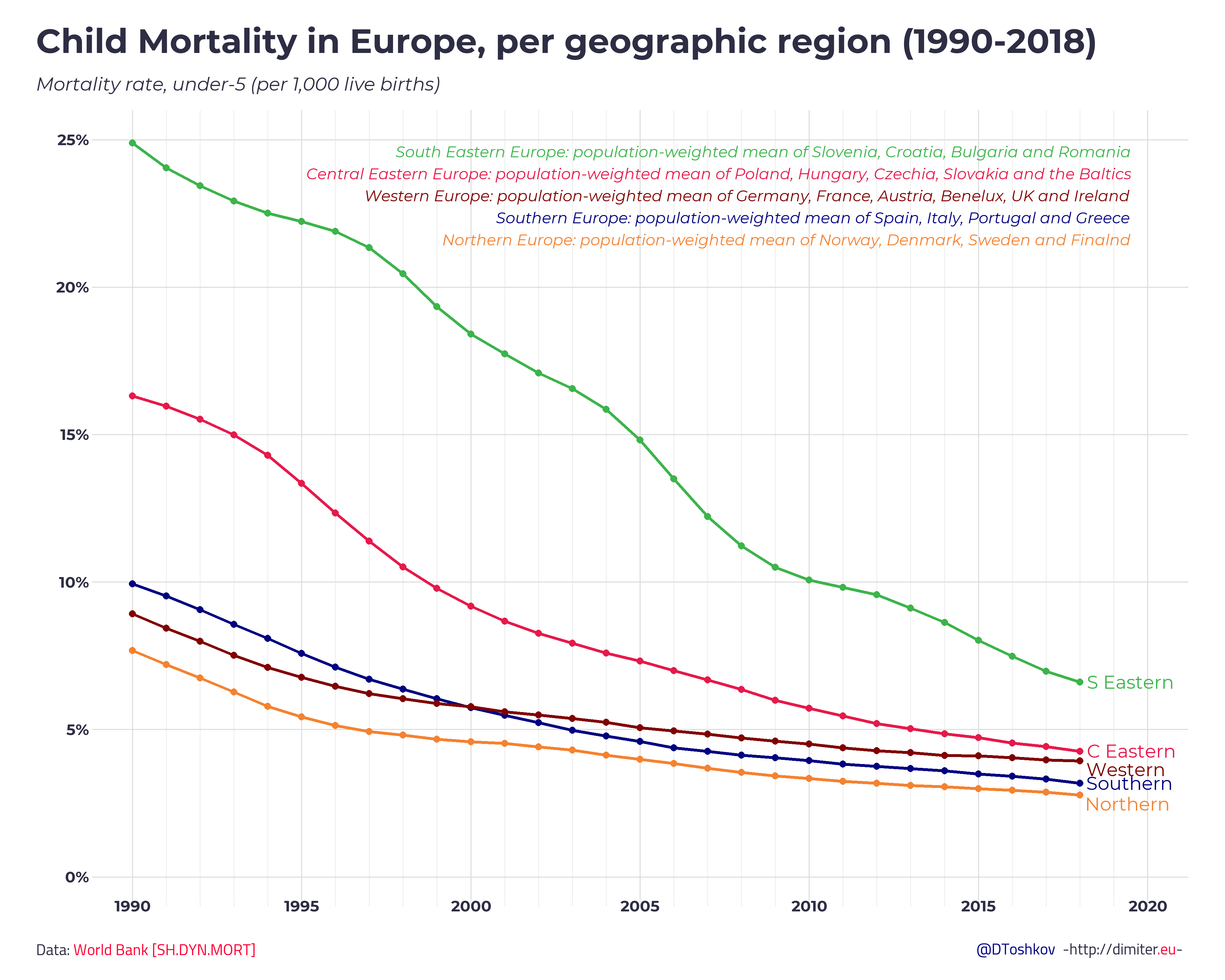
http://www.dimiter.eu/Visualizations_files/CEE.html
